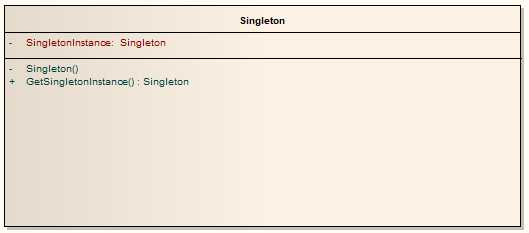设计模式面对面之单例模式
Posted
tags:
篇首语:本文由小常识网(cha138.com)小编为大家整理,主要介绍了设计模式面对面之单例模式相关的知识,希望对你有一定的参考价值。
单例模式
类图:

常用的实现方式:
第一种线程安全

public sealed class Singleton { public static readonly Singleton SingletonInstance=new Singleton(); private Singleton() { } }
第二种单线程安全

//第二种 public sealed class SingletonLazy { private static SingletonLazy _singletonInstance; private SingletonLazy() { } //单线程,线程安全 public static SingletonLazy SingletonInstance { get { if (_singletonInstance == null) { _singletonInstance = new SingletonLazy(); } return _singletonInstance; } } }
第三种线程安全

public sealed class SingletonLazy { private static SingletonLazy _singletonInstance; private SingletonLazy() { } //多线程,线程安全 private static readonly object AsyncObject = new object(); public static SingletonLazy SingletonInstanceAsync { get { if (_singletonInstance == null) { lock (AsyncObject) { if (_singletonInstance == null) { _singletonInstance = new SingletonLazy(); } } } return _singletonInstance; } } }
使用场景:
当程序要求只有一个对象存在时,会考虑用单例模式。
在使用前需要了解单例模式与静态对象区别:
功能角度:二者可以相互替换,没什么区别,什么都不考虑的情况用那种方式都行。
性能:单例对象可以延迟创建 ,优先考虑。
扩展:单例对象可以实现多态,扩展性好,静态对象不能。
线程安全:单例对象在多线程时,要考虑线程同步,静态对象不需要。
在不考虑性能和扩展性的时候优先用静态对象。
单例对象的创建方式:
上面三种实现方式比较常见,当然实现方式很多,根据具体的场景去选择,一般默认第一种,简单方便。
以上是关于设计模式面对面之单例模式的主要内容,如果未能解决你的问题,请参考以下文章
